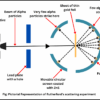The stage is set for a vibrant display of North American football as the 2025 MLS All-Star Game brings together the elite talents of Major League Soccer and Liga MX. Hosted at the state-of-the-art Q2 Stadium in Austin, Texas, this annual fixture is more than just an exhibition; it is a direct confrontation of two distinct footballing philosophies and a significant marker in the ongoing continental rivalry.
A Budding Rivalry: MLS vs. Liga MX
The decision to pit the MLS All-Stars against their Liga MX counterparts transformed a traditional intra-league showcase into a compelling international clash. This format acknowledges the undeniable and escalating competitive tension between the two leagues. Liga MX, historically recognized for its passionate support and robust domestic competitions, frequently contends for supremacy in the CONCACAF region. Meanwhile, MLS continues its strategic expansion, attracting a blend of emerging local talent and established global stars, progressively narrowing the gap in performance and prestige.
The previous season`s encounter serves as a vivid reminder of this rivalry, with Liga MX All-Stars securing a decisive 4-1 victory. This result not only showcased their formidable attacking capabilities but also provided the MLS squad with considerable impetus to reverse the outcome this year. The match is not merely a friendly contest but a strategic opportunity for both leagues to assert their dominance and influence across the North American soccer landscape.
The Roster: Star Power and Strategic Absences
An All-Star game`s allure inherently lies in its constellation of top-tier athletes. The 2025 edition promises just that, with the Liga MX roster featuring a particularly intriguing blend of talent. Leading their charge are figures such as Juan Brunetta, a former Balon de Oro recipient whose attacking prowess is well-documented, and the legendary Spanish defender Sergio Ramos, a player synonymous with elite-level defending and a storied career at Real Madrid. Ramos`s participation adds a profound layer of experience and tactical acumen to the Liga MX side, a tangible representation of their quality.
On the MLS side, initial fan voting saw the inclusion of celebrated names like Lionel Messi and Jordi Alba. However, the realities of a demanding professional season, coupled with the strategic priorities of individual clubs, often necessitate difficult decisions regarding player participation in exhibition matches. Consequently, both Messi and Alba will be absent from Wednesday`s fixture. While their presence would undoubtedly have elevated the global profile of the event even further, such occurrences are not uncommon in the dynamic world of professional sports. Nevertheless, the MLS roster remains replete with exceptional talent eager to showcase their abilities. Players like Alexis Vega, recognized for his dynamic playmaking and goal-scoring contributions, are primed to step into the spotlight and demonstrate the offensive capabilities that define the league`s top performers.
“The beauty of an All-Star game lies not just in the marquee names, but in the collective talent assembled. While the absence of a few prominent figures might temper initial expectations for some, it often provides an amplified platform for other standout performers to truly distinguish themselves.”
Game Dynamics: Designed for Spectacle
The very nature of an All-Star Game encourages an uninhibited, attacking style of play. Unlike high-stakes league matches, which often prioritize tactical rigidity and defensive solidity, these exhibitions are engineered for entertainment. Coaches typically leverage the opportunity to field multiple lineups and introduce numerous substitutions, particularly after the halftime interval, allowing a broader array of players to participate and minimizing the risk of injury from prolonged exertion.
This dynamic often leads to a more open contest, characterized by fluid transitions and an increased volume of scoring chances. It is a common observation that the second half of such matches frequently produces more goals than the first, as tactical structures loosen and players are afforded greater freedom to express their offensive creativity. This approach ensures a high-energy spectacle, prioritizing flair and attacking intent, which consistently resonates with the attending public.
Austin`s Embrace of Soccer
The selection of Q2 Stadium in Austin as the host venue underscores the city`s rapidly burgeoning reputation as a significant soccer hub. Austin boasts a passionate and knowledgeable fan base, creating an electric atmosphere that elevates the match experience for both players and spectators. The stadium itself, designed with modern amenities and an intimate feel, is an ideal setting to witness the convergence of these two powerful soccer leagues.
As the countdown to the 2025 MLS All-Star Game continues, the focus rightfully shifts to the impending exhibition of skill, the fierce yet friendly rivalry, and the undeniable talent poised to take the field. Regardless of the final scoreline, the match is set to deliver a memorable evening of football, reinforcing the intricate and competitive relationship between MLS and Liga MX on the North American sporting stage.








